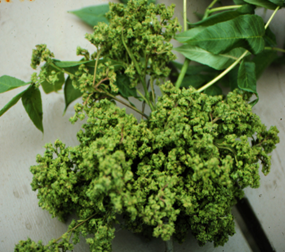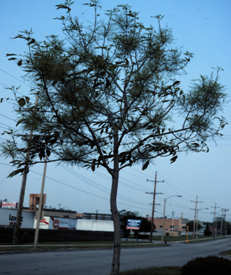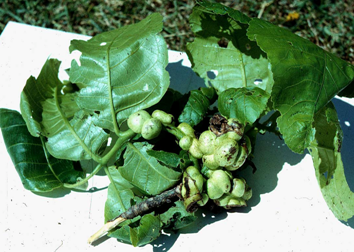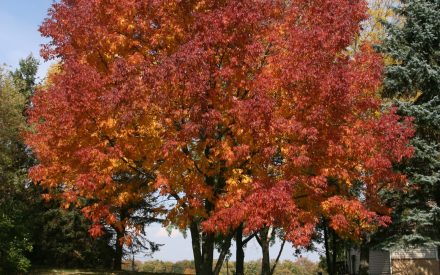
What is wrong with my ash tree?
Galls are abnormal plant growth that can be caused by insects, mites or plant diseases. On ash trees, a tiny eriophyid mite causes male flowers to grow into round greenish, 1∕2 to 1 inch diameter tumor-like structure. Sometimes the lumpy growths also cause leaf distortions. During the late summer the galls turn dark brown and woody, and can remain on the tree for more than one season. Ash flower gall mites are too small to be seen with the unaided eye. These worm-shaped mites spend the winter under the buds and begin feeding, and initiate gall growth early in spring. Once the gall starts growing, it is too late to treat the plant.
Will ash flower gall harm my tree?
Ash flower gall does not harm the health of a tree, but in some years will make a tree look unsightly. In rare situations the weight of the gall tissue can cause branches to be strained. Some trees seem to be more prone to this problem than others.
How do I control ash flower gall?
Timing is everything. The mites must be killed before galls begin to grow in the spring. Look for the first signs of green in the opening flower buds. An application of carbaryl in the spring when the first blossoms begin to form will reduce the number of galls. However, larger trees are difficult to treat, and because ash flower gall is considered a cosmetic problem, treatment is rarely suggested. Young trees do differ in their susceptibility. Therefore, consider replacing highly susceptible trees.
Author: Phil Pellitteri, UW Insect Diagnostic Lab
Revised: 8/6/2012
Item number: XHT1048
Download Article





 Ash Yellows
Ash Yellows Ash Alternatives for Homeowners and Professionals
Ash Alternatives for Homeowners and Professionals Deciduous Tree Galls
Deciduous Tree Galls Is My Ash Tree Worth Treating for Emerald Ash Borer?
Is My Ash Tree Worth Treating for Emerald Ash Borer?


